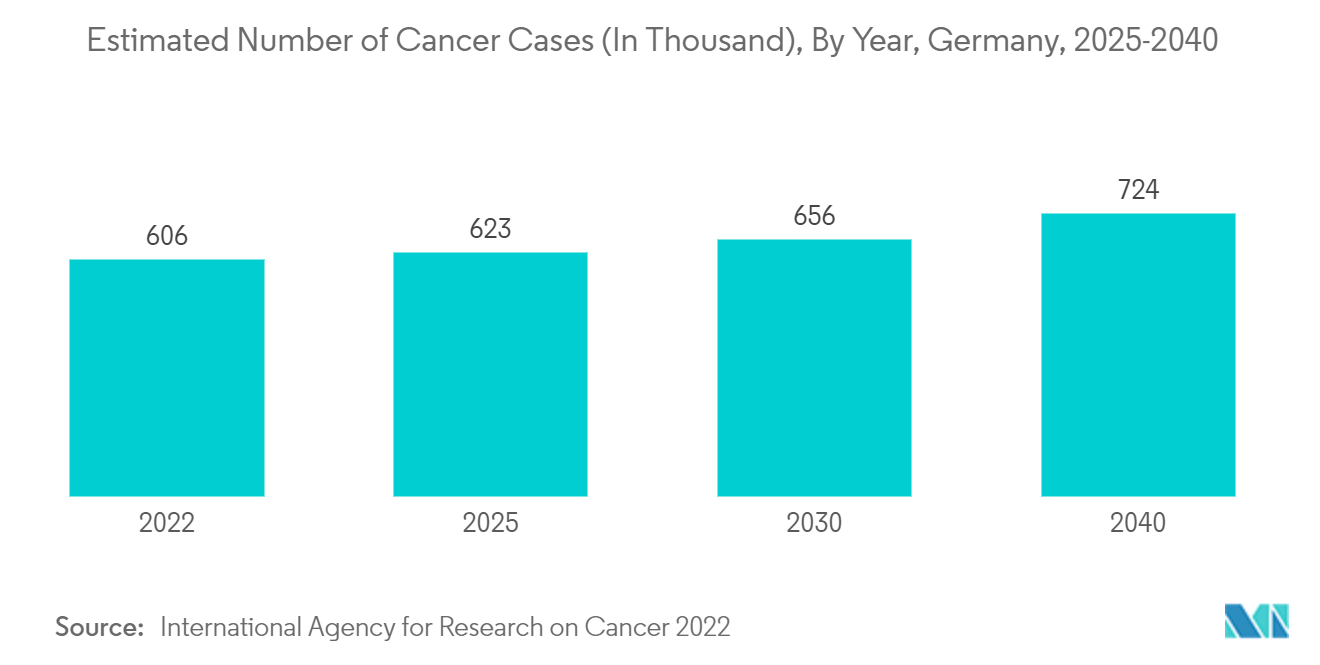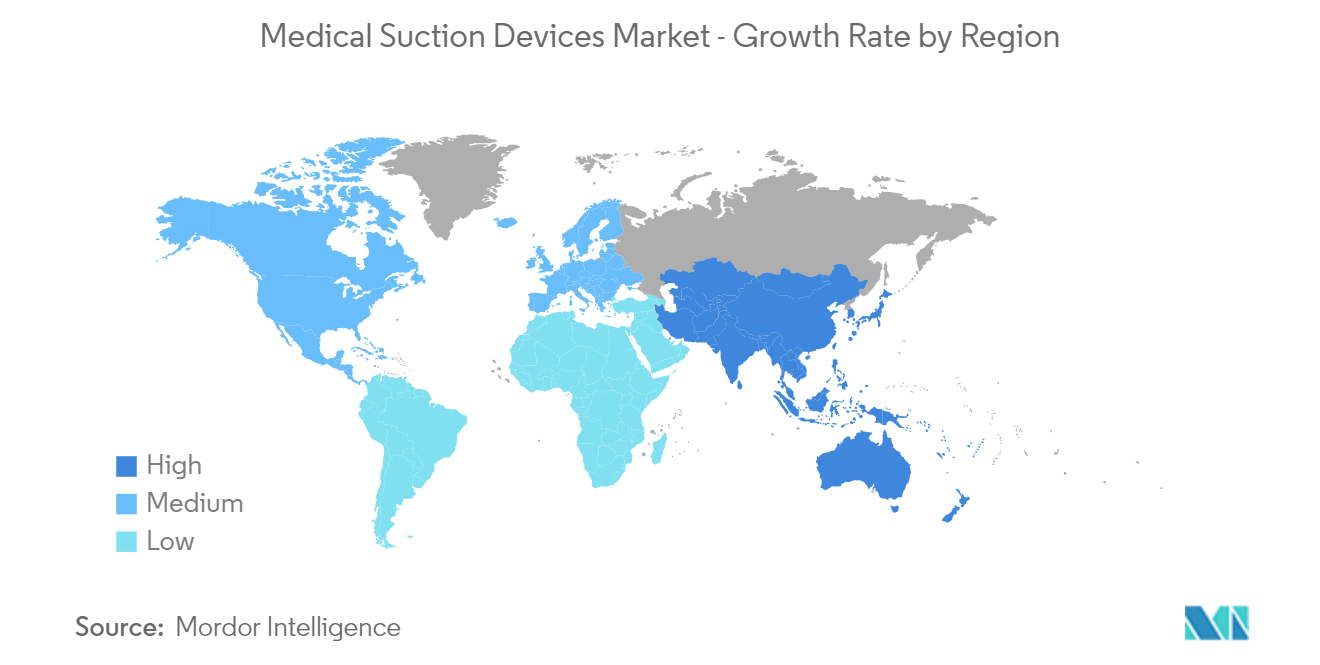Market Trends of Global Medical Suction Devices Industry
The Surgical Applications Segment is Expected to Witness Significant Growth Over the Forecast Period
Medical suction pumps are used during and after surgery to remove surgical fluids, gases, tissue (including bones), and bodily fluids. They are used in operating theaters, delivery suites, ENT, and emergency departments. Smaller specialized suction pumps are used in dental departments.
Factors such as the growing burden of respiratory and other chronic diseases and the increasing burden of surgical procedures are expected to boost the growth of the segment. According to the Instituto Nazionale di Statistica’s July 2023 update, there were 223,475 injuries in road accidents in Italy in 2022, an increase of 9.2% compared to the previous year. The high number of injuries in different countries increases the need for suction devices and boosts the procurement of the same.
According to estimates from the Global Cancer Observatory updated in February 2024, around 606 new cancer cases were identified in Germany in 2022; the number is expected to reach 656 thousand by 2030. Therefore, the high incidence of cancer is expected to increase surgical procedures in the country, along with the adoption of medical suction devices required during the procedures.
The data updated by Cedars-Sinai in January 2022 showed that coronary artery bypass graft surgery (CABG), also known as coronary artery bypass or bypass surgery, was the most common heart surgery. Each year, more than 300,000 people in the United States have successful bypass surgeries. Such a high number of surgeries increases the use of suction devices, boosting segment growth.
The approval of products for regulatory authorities is also contributing to the growth of the segment. For instance, in January 2022, Smith+Nephew received approval for new indication for its PICO 7 and PICO 14 Single Use Negative Pressure Wound Therapy (sNPWT) Systems. The systems were cleared by the US Food and Drug Administration to be used on closed surgical incisions to reduce the incidence of superficial and deep incisional surgical site infections (SSIs) for high-risk patients in Class I and Class II wounds, post-operative seroma and dehiscence. The systems include suction pumps that may promote wound healing via the removal of low to moderate levels of exudate and infectious materials.
Thus, the growing usage of these devices for various functionalities during surgeries, along with the increasing number of surgeries, is expected to boost segmental growth.

North America is Expected to Hold a Significant Share in the Medical Suction Devices Market During the Forecast Period
North America is projected to hold a significant share of the medical suction devices market owing to factors such as the increasing number of chronic respiratory diseases (such as chronic obstructive pulmonary disorder (COPD) and asthma) and the development of new and innovative devices.
Respiratory diseases such as COPD and asthma are some of the diseases that affect the quality of life for most Americans. COPD and asthma cause an increase in airway secretions that may obstruct the airway. Thus, clearing the airway with an aspirator or suction machine is required, ultimately boosting the demand for medical suction devices in the country. According to the January 2023 update by the American College of Allergy, Asthma and Immunology (ACAAI), the annual hospitalization related to asthma was 439,000, and asthma accounted for nearly 1.3 million emergency room visits annually in the United States. The high prevalence of the diseases is anticipated to increase the demand for medical suctioning devices for patient survival and a better quality of life, driving the market’s growth in the country.
As per the January 2023 update by the Lung Canada organization, the rate of prevalence and incidence of asthma was among the highest in Canada, and about 2.7 million Canadians were diagnosed with asthma every year. Also, as per the source above, asthma was the third crucial factor related to school absenteeism, coupled with hospitalization for children. This burden of respiratory diseases is anticipated to create demand for medical suctioning devices and fuel the growth of the market in North America during the forecast period.
Innovative product launches and approvals in the North American market are anticipated to fuel the market growth over the forecast period. For instance, in April 2023, Defibtech introduced an advanced automated chest compression device, the ARM XR, which healthcare professionals can use to treat patients with cardiac arrest. This device features a suction cup piston design, which develops compressions and chest wall expansion and has an appropriate battery life that can be operated for longer hours to maintain compressions. Thus, such developments in the country are expected to fuel market growth.
The rise in investments in hospital infrastructure in Mexico is expected to create numerous opportunities for various medical devices in healthcare settings. For instance, in April 2022, the Jalisco government (Mexico) planned to invest more than USD 301.5 million in healthcare infrastructure over the next three years to build new hospitals and healthcare centers and upgrade existing ones. In addition, the “Mexican Social Security Institute (IMSS)” shared plans to invest USD 677.2 million to build 111 new hospitals by 2024 in Mexico. Thus, these investments are anticipated to create new opportunities for medical devices to be available in healthcare settings and, hence, are expected to drive the market’s growth in the region.
Therefore, owing to the aforementioned factors, such as the high prevalence of diseases, new product approvals, and the rise in investments in hospital infrastructure, the market is expected to grow in North America over the forecast period.


